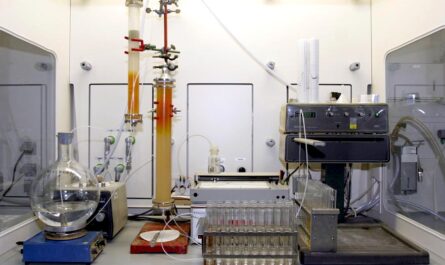Types of immunosuppressive drugs used after transplant
Corticosteroids: Corticosteroids such as prednisone and methylprednisolone are often prescribed after a transplant to suppress the immune system. They work by interfering with the activation and function of immune system cells such as lymphocytes and macrophages. Corticosteroids are effective but also have side effects like diabetes, high blood pressure, weight gain, and bone loss if taken long term.
Calcineurin inhibitors: Cyclosporine and tacrolimus are calcineurin inhibitors that are very effective post- Organ Transplant Immunosuppressant Drugs. They interfere with T cell activation which is crucial for an immune response against foreign tissue. While they help prevent rejection, long term use of calcineurin inhibitors can lead to kidney damage, high blood pressure, diabetes, and neurological issues.
Antiproliferative agents: Mycophenolate mofetil (MMF) and mycophenolic acid (MPA) block lymphocyte proliferation which is essential for an immune response. They work synergistically with other drugs to prevent rejection. Side effects can include gastrointestinal problems, bone marrow suppression, and increased risk of infection.
mTOR inhibitors: Everolimus and sirolimus inhibit the mTOR protein which is involved in T-cell activation and proliferation. As protein synthesis inhibitors, they help prevent graft rejection. However, they can cause mouth sores, high cholesterol and triglyceride levels with long term use.
Monoclonal antibodies: Antibodies like basiliximab, daclizumab, and alemtuzumab work by blocking immune cells involved in rejection. They are used induction therapy along with other drugs but have limited long term use due to increased infection risk.
Managing immunosuppression levels post-transplant
Careful Organ Transplant Immunosuppressant Drugs level monitoring is required after transplant to balance preventing rejection versus side effects. Shortly after transplant when the risk of rejection is highest, immunosuppression levels may be kept on the higher side. Over months to years as risk decreases, doses can gradually be tapered down.
Drug levels are checked through regular blood tests to ensure they remain within the target therapeutic range. If levels are too low, the recipient risks graft rejection whereas levels that are too high increase side effect risks. Dose adjustments are made accordingly. Non-compliance with medications also increases rejection risk and is closely watched for.
Beyond medications, lifestyle factors like managing stress, nutrition, exercise and infection control help optimize outcomes on lower immunosuppression. Recipients also receive guidance on avoiding people with contagious illnesses, getting vaccines as advised and using protective measures like masks in certain settings.
Managing side effects of long term Organ Transplant Immunosuppressant Drugs
While immunosuppression saves lives by preventing rejection, it also makes the body more vulnerable to other health issues over the long term. Careful monitoring and management is important:
– Kidney function is tracked with regular blood and urine tests as calcineurin inhibitors and corticosteroids can damage the kidneys. Dosage adjustments prevent worsening of kidney function.
– Diabetes and dyslipidemia from steroids require glucose and cholesterol level monitoring. Medications, diet control and exercise help manage these conditions.
– Side effect profiles of different drugs enable choosing less harmful options when possible. For instance, mTOR inhibitors cause less kidney toxicity than calcineurin inhibitors.
– Screening programs aim to catch cancers, infections and other illnesses earlier when more treatable. Cancer risk is elevated due to immunosuppression.
– Vaccinations against hepatitis B, HPV, pneumococcus etc. protect against dangerous infections.
– Bone density loss from steroids is managed through calcium, vitamin D, lifestyle measures and medications like bisphosphonates to prevent fractures.
– Neurotoxic effects of calcineurin inhibitors demand dose reduction if neurological problems surface.
– Regular visits with a transplant nephrologist provide comprehensive long term management support after the transplant.
Overall, organ transplant immunosuppressant drugs improves transplant outcomes but demands vigilance to mitigate side effects through a multidisciplinary approach. With careful monitoring and adherence to medical advice, recipients can maintain excellent quality of life even while on maintenance immunosuppression.
*Note:
1. Source: Coherent Market Insights, Public Source, Desk Research
2. We have leveraged AI tools to mine information and compile it.
About Author - Money Singh
Money Singh is a seasoned content writer with over four years of experience in the market research sector. Her expertise spans various industries, including food and beverages, biotechnology, chemicals and materials, defense and aerospace, consumer goods, etc. LinkedIn Profile



